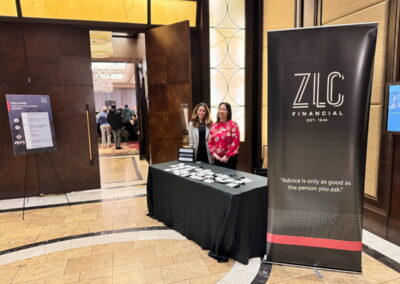The End of Deductibles
My passion is working with human resource and finance professionals who share the belief there is a better way for employee benefits, and at the very least work in ways that are different than the way we managed benefits plans 20 or 30 years ago. Annual flat dollar deductibles are a long-standing strategy for extended health and dental plans and used to be quite common.
The level of cost-sharing afforded by deductibles could have been quite significant in the 1980s or 1990s given the low cost of benefits plans back then. Some deductibles still exist today but their impact on overall cost sharing is very minor, so perhaps their end is near.
The underlying concept of a flat dollar deductible is quite simple – employees pay the first $25, $50, $100 or $200 of their claims cost each year before their benefits plans begin to pay any portion of the claims costs. For employees who use their plan quite heavily, they likely will reach these deductible levels by the end of January and then the plan pays for the rest of the year. For other healthier employees, they will not likely see any benefit from their plan until much later in the year if at all. Does that really make sense or is it simply arbitrary cost containment?
The prevalence of annual flat dollar deductibles varies depending on the benchmarking survey source, but it is fair to say that they are currently a minority practice. On average, it appears that about only 20% of employee benefits plans in Vancouver and other parts of Canada still have a deductible for their extended health and/or dental plans. So, in addition to being non-competitive in the market for talent, there are some other reasons to consider ending the use of deductibles:
- INFLATION – Flat dollar deductibles are just that – flat. They do not typically change over time unless manually adjusted to reflect benefits plan inflation, which is administratively a nuisance. If initially designed to achieve a certain level of cost sharing, they will not maintain that target level over time given that benefits costs have increased significantly and continue to do so. A $25 annual deductible might have represented 10% to 20% cost sharing for an extended health plan in the 1980s but now represents less than 2%.
- COMPLEXITY – Deductibles are often combined with other forms of employee cost sharing – namely, premium cost-sharing, coinsurance, other deductibles (i.e., per prescription), annual maximums, etc. At the end of the day, do employees really know how much of the bill they are actually paying? Given that employee benefits plans are ultimately designed to attract, retain and engage employees, organizations cannot afford to have their employees confused about their benefits plans in a highly competitive labour market. The simplicity of coinsurance and/or premium sharing makes them more advantageous – if the plan in total, or individual benefits in the plan, cost more, the employee pays more.
- CONSUMERISM – Flat dollar deductibles do not motivate any form of behavior or consumerism. If we are truly going to manage inflation and ensure the sustainability of benefits plans, employees must play an active role and make good decisions. As such, cost sharing should encourage the right behavior – buy the right product at the right time at the right location. There is no motivation with flat dollar deductibles, just a nuisance that results in no benefits being paid at the beginning of each plan year.
- FRUSTRATION – There is a genuine risk that your healthiest employees are frustrated with flat dollar deductibles. An unhealthy employee dealing with multiple chronic conditions could easily cost the plan $2,000 per year or more in drugs alone and for that employee a $25 to $200 annual flat dollar deductible is still a great deal. However, a healthy employee might only have one claim per year and thus not receive any reimbursement. Why would we want to penalize our healthiest employees who cost our plans the least?
- INEFFECTIVENESS – It is an irony that flat dollar deductibles were designed to help share plan costs with employees but they are actually not that effective. Once these deductibles are satisfied, usually early in the plan year, they do not contain costs further for the rest of the year. In fact, employees may in turn be motivated to take advantage of the plan in order to rationalize their need to pay the deductible. On the other hand, coinsurance continues to motivate behaviour for each claim throughout the year and premium cost sharing indirectly motivates behaviour if employees understand that their claims will drive future plan costs and future premiums that will be shared.
Flat dollar deductibles were invented to help share the cost of employee benefits plans with employees. The need to share costs and maintain some level of “consumerism” amongst employees continues today and is arguably even more important to sustain plans in a high cost, high inflation environment. However, there are certainly more effective and more equitable ways to share costs in a plan. Organizations need to assess their underlying benefits philosophy and the reality of their current and future financial situation to determine the best way to structure their cost sharing.
Now more than ever, it is important to work with an advisor that has the necessary skills and experience, and an advisor that can help plan sponsors better understand the impact of creative plan designs and their role in helping to ensure the sustainability of employee benefits plans. We would be pleased to discuss your specific situation with you to identify the best strategy with respect to your employee retirement programs and employee benefits programs. Should you have any questions on the above, please don’t hesitate to contact me or a member of our team.
ZLC Financial is one of the fastest growing advisors for employee benefits in Vancouver and we are fortunate to have the best people, resources and clients. We provide value to you by leveraging one of the most skilled benefits teams – collectively almost 300 years of experience within our team of 15 employee benefits specialists. We have been working with businesses ranging from 3 to over 65,000 plan members for over 30 years.
By Dan Eisner
This information is designed to educate and inform you of strategies and products currently available. As each individual’s circumstances differ, it is important to review the suitability of these concepts for your particular needs with a qualified advisor.




